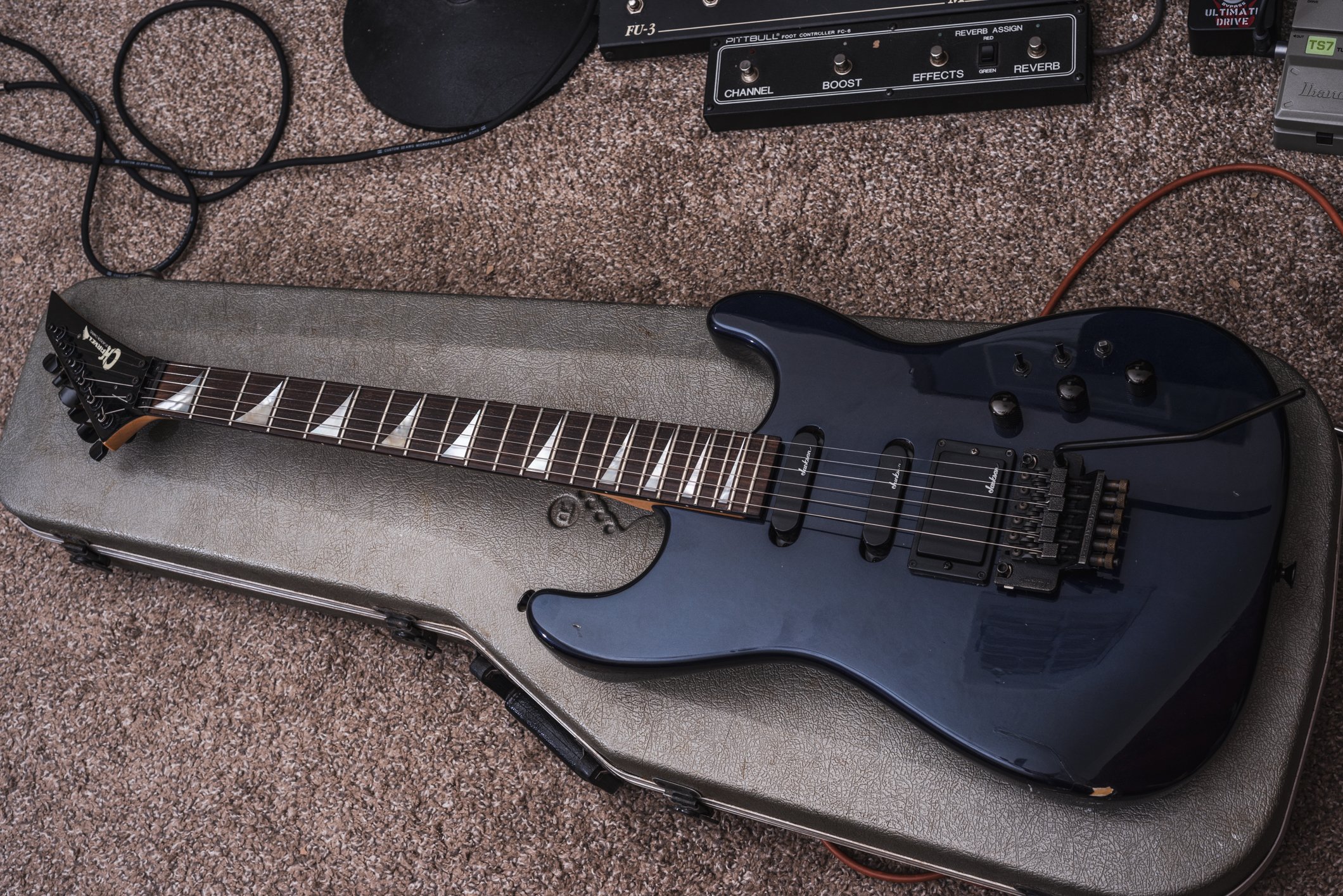The included Panasonic 14-42mm f/3.5-5.6 Mega OIS kit lens is reasonably sharp, and more contrasty than my Olympus 14-42mm f/3.5-5.6 II R, especially at the telephoto end. The image stabilization is somewhat lackluster though, barely noticeable and can't be disabled easily. I used this lens mainly at 14mm with a variable ND filter. I chose a very inexpensive variable ND, and after taking some daytime photos in between video clips, noticed an immediate loss of quality when it was on. About halfway through my trip, I began to just unscrew the variable ND when taking stills. Conveniently, this lens has the same 46mm filter thread as my Olympus 25mm f/1.8, so I was able to use it with both lenses for video. The 25mm f/1.8 is quite good for video, with a nice shallow depth of field and wide focusing ring. The G7 also displays a guide along the bottom when in manual focus mode, showing how close to minimum or infinity the focus is as it is being adjusted. While this doesn't make up for a real distance scale or even an on-screen scale with distance units (such as Fujifilm X bodies), it is useful in combination with the excellent peaking feature and I had little difficulty acquire accurate focus even at wide aperture settings.
Autofocus is acquired exclusively through a contrast detect method, and the G7 lacks on-sensor phase detection elements. This seemingly puts it at a speed disadvantage when compared to competing models from Sony, or even Canon. However, in stills mode the AF is very fast and barely does the back-and-forth hunt common to contrast detect focusing modes. The older Olympus OM-D EM-5 is far worse, and racks back and forth three or four times every time it tries to acquire focus. In video mode the focus is decidedly slow, clearly focusing on smooth transitions and accuracy rather than the snappier speed of the Sony's or Canon's. I'd prefer to have the faster focus as an option, but most video is manually focused anyway so I haven't missed the speed as much as I initially thought.
Image Quality
While this camera shares the same 16 megapixel count of other micro 4/3 bodies going back for years now, some revisions have squeezed out somewhat better noise performance than past bodies. I was surprised, when perusing some studio comparison images, that at higher ISOs this 16mp sensor has slightly better noise performance than the newer 20mp micro 4/3 bodies such as the Pen-F, GX8, or even the OM-D EM-1 II. Of course, when compared to APS-C or FF bodies such as the 6D, 16mp Fuji X's, etc it does perform somewhat worse in stills. I did notice something else I wasn't expecting though, and that is the 4k video output seems to be oversampled a bit from the sensor, meaning the video out of this camera is actually superior in terms of noise and grain when compared to many cameras with larger sensors. I've seen that the new Sony A6500 also oversamples its 4k footage, so that camera is probably better than this, but it is also nearly three times the price.
Raw files are a nice 12-bit sample, with good color accuracy and a decent dynamic range despite somewhat poorer high ISO performance compared to larger sensors. It's important to note that when in electronic shutter modes, RAW files drop down to 10-bits of color information. The G7 also offers 4k photo modes, essentially using a short burst of 4k video from which the user can extract 8 megapixel 8-bit JPEGs from. This works well, though with the high continuous burst rate I found it more advantageous to capture action with the mechanical shutter rather than hoping for a single distortion free frame of video to extract. Rolling shutter is present, and fast moving objects do have some distortion to them as the sensor readout goes top to bottom. This limits the usefulness of this feature in my opinion, but it would excel at capturing a good moment of someone's facial expressions or to get a good picture of someone who frequently blinks for example.
Take a look at these samples from DPReview, showing an obvious difference in grain between the G7, OM-D EM-1 Mark II, Fujifilm X-E2, and the Canon 6D. Especially take note of the text clarity on the color wheel. DPReview Comparison












































